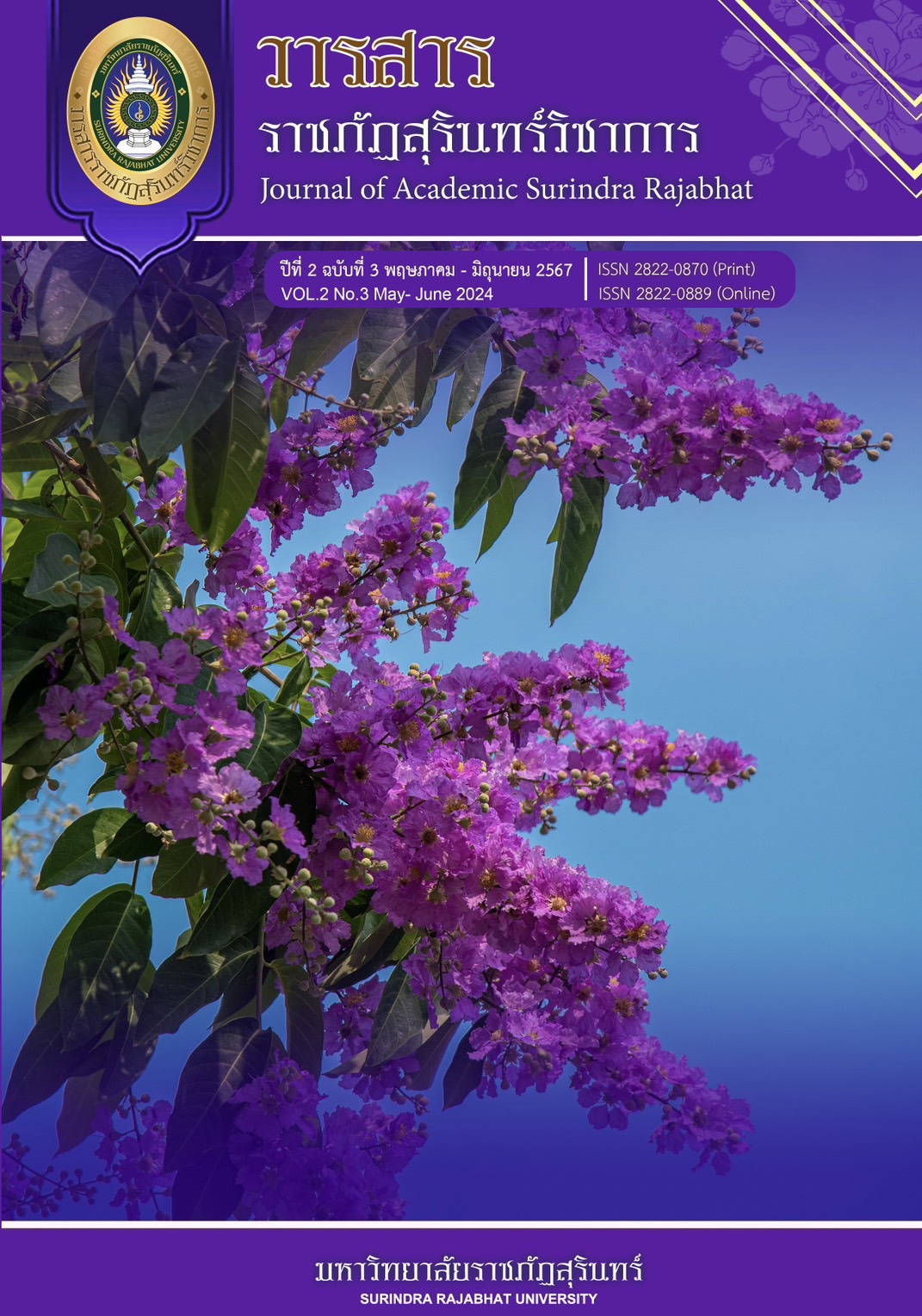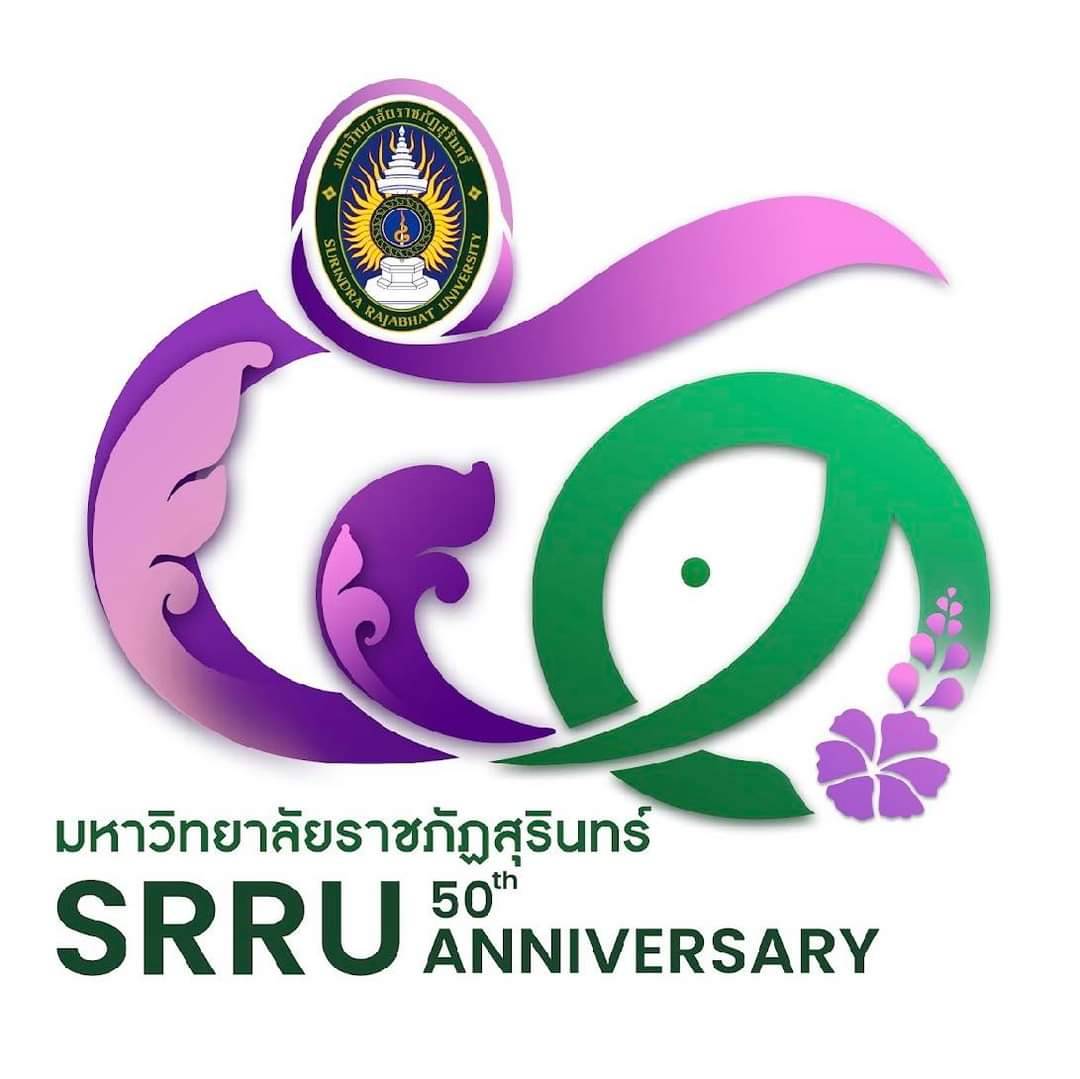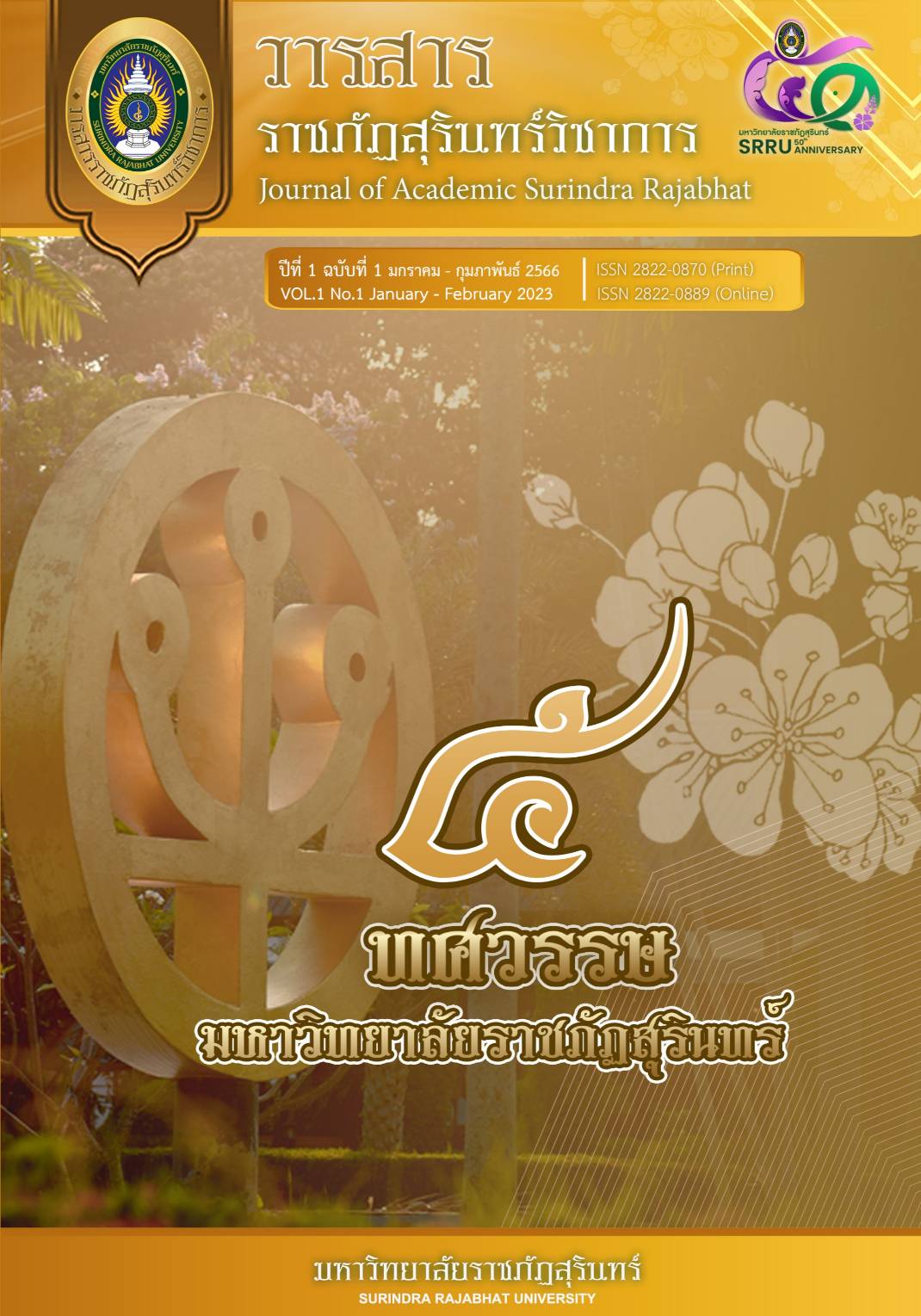The Development of Learning Achievement of Mathayomsuksa 2 on Parallel lines topics by group Learning Activity with TAI Technique and Geogabra Program
DOI:
https://doi.org/10.14456/jasrru.2024.19Keywords:
TAI Technique, Geogabra Program, Learning AchievementAbstract
The objectives of this research were to (1) develop collaborative group learning activities using the TAI technique in conjunction with the geogabra program on parallel lines for mathayom 2 students with efficiency according to the 70/70 percent criteria (2) compare academic achievements. know mathematics about parallel lines for Mathayom 2 students between before and after school using collaborative group learning activities, TAI techniques with the geogabra program, and (3) study student satisfaction with learning activities. Collaborative TAI technique with the GeoGabra program on parallel lines for mathayom 2 students. the sample group was mathayom 2 students khammuang school, semester 1 academic year 2023, 35 people, obtained from random sampling. the tools used in the research are (3.1) a cooperative group learning plan using TAI techniques combined with the geogabra program, (3.2) a pre-study and post-study achievement test, and (3.3) a satisfaction questionnaire. statistics used in the research include percentage, mean, and standard deviation. and test the hypothesis with t-test (dependent sample). the results of the research found that (1) collaborative group learning activities, TAI technique combined with the geogabra program had an efficiency value of 74.93/77.29, meeting the specified criteria (2) students had Mathematics learning achievement using collaborative group learning activities using the TAI technique along with the geogabra program after studying was significantly higher than before studying at the .01 level and (3) students were satisfied with the learning activities. the collaborative group TAI technique combined with the geogabra program was overall at the highest level
(X =4.49, S.D.=0.64).
Downloads
References
กระทรวงศึกษาธิการ. (2551). หลักสูตรการศึกษาขั้นพื้นฐาน พุทธศักราช 2551. กรุงเทพฯ : โรง พิมพ์ชุมนุมสหกรณ์การเกษตรแห่งประเทศไทย.
เต็มเดือน เต้าแก้ว, นภาภรณ์ ธัญญา และเดชกุล มัทวานุกูล. (2564). ผลการจัดการเรียนรู้ด้วยวิธีการสอนแบบแลกเปลี่ยนบทบาทร่วมกับกลวิธี STARที่มีต่อความสามารถในการแก้โจทย์ปัญหาทางการเรียนคณิตศาสตร์สำหรับนักเรียนชั้นมัธยมศึกษาตอนต้น โรงเรียนสาธิตมหาวิทยาลัยสงขลานครินทร์ (ฝ่ายมัธยมศึกษา). วารสารภาวนาสารปริทัศน์. 1(3) : 1-14.
ประจบ แสงสีบับ. (2556). ผลการจัดการเรียนรู้แบบร่วมมือโดยใช้กลวิธี STAR เรื่อง โจทย์ปัญหาสมการเชิงเส้นตัวแปรเดียวและการแปรผันที่มีต่อความสามารถในการแก้ปัญหา และทักษะการเชื่อมโยงทางคณิตศาสตร์ของนักเรียนชั้นมัธยมศึกษาปีที่ 2. วิทยานิพนธ์ปริญญามหาบัณฑิต มหาวิทยาลัยศรีนครินทรวิโรฒ.
วรุจิภา สายสุข. (2560). การพัฒนาผมสัมฤทธิ์ทางการเรียนโดยใช้แบบฝึกทักษะ เรื่อง ค่ากลางของ ข้อมูลของนักเรียนชั้นมัธยมศึกษาปีที่ 6 โรงเรียนโพธิสารพิทยากร. ปริญญาวิทยานิพนธ์ ครุศาสตรมหาบัณฑิต. กรุงเทพฯ : มหาวิทยาลัยรามคำแหง.
สถาบันส่งเสริมการสอนวิทยาศาสตร์และเทคโนโลยี. (2559). คู่มือครูรายวิชาพื้นฐานคณิตศาสตร์ ชั้นประถมศึกษาปี ที่ 5. กรุงเทพฯ : คุรุสภาลาดพร้าว.
สมเกียรติ อินทสิงห์. (2559). การพัฒนาความสามารถในการแก้ปัญหาและผลสัมฤทธิ์ทางการเรียนวิชาคณิตศาสตร์โดยใช้กลวิธี STAR ร่วมกับกราฟิกออแกไนซ์เซอร์ สำหรับนักเรียนชั้นมัธยมศึกษาปีที่ 4. วารสารมหาวิทยาลัยศิลปากร สาขามนุษยศาสตร์ สังคมศาสตร์ และศิลปะ. 9(1) : 356-368.
เอมฤดี สิงหะกุมพล, ไพศาล หวังพานิช และสงวนพงศ์ ชวนชม. (2563). การศึกษาผลการจัดการเรียนรู้แบบร่วมมือร่วมกับกลวิธี STAR รายวิชาคณิตศาสตร์สำหรับนักเรียนชั้นมัธยมศึกษาปีที่ 1. สิกขา วารสารศึกษาศาสตร์. 7(1) : 73-82.
Maccini, P. & Gagnon, J. (2011). Mathematics strategy instruction (SI) for middle school students with learning disabilities. [Online]. Available : http://www.ldonline.org/ article/Mathematics_ Strategy_Instruction_%28SI%29_for_Middle_School_Students_with_Learning_Disabilities. Retrieved 18 October 2022.
Downloads
Published
How to Cite
Issue
Section
Categories
License
Copyright (c) 2024 Journal of Academic Surindra Rajabhat

This work is licensed under a Creative Commons Attribution-NonCommercial-NoDerivatives 4.0 International License.










